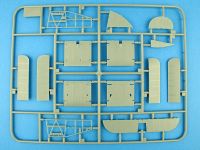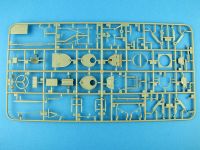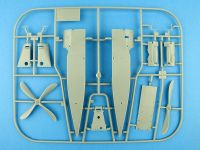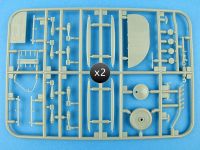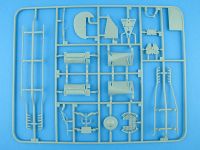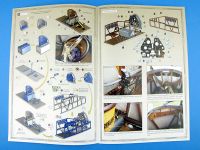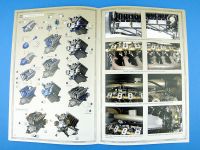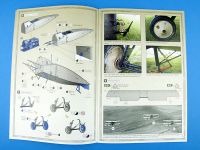Wingnut Wings | #32060: Bristol F.2b Fighter (Post War)
Reviewed by Kevin Futter
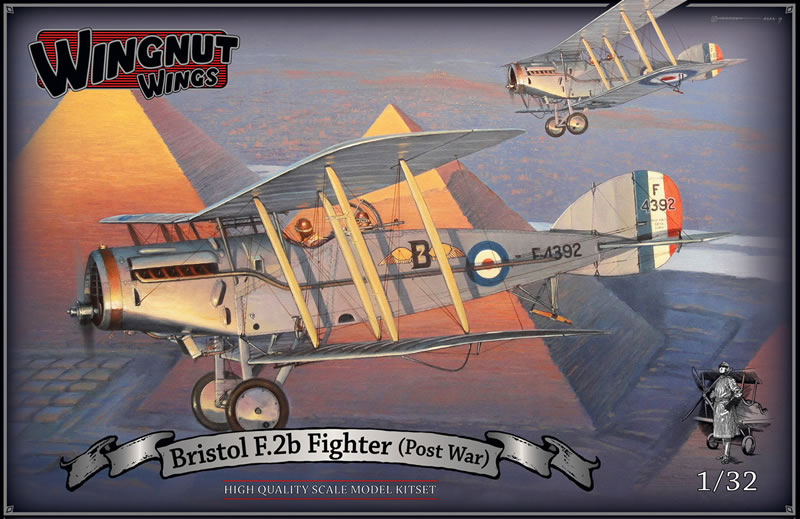
New Zealand firm Wingnut Wings continues its prolific release schedule of 1/32 WW1 aircraft kits with a rare re-boxing of an earlier kit, in this case one of the company's earliest releases in the form of the Bristol F.2b Fighter. This new release sees the kit updated to post war guise. Quoting from the Wingnut Wings website:
Released on 17 September 2015 • High quality Cartograf decals for 5 post WW1 aircraft • 193 high quality injection moulded plastic parts • 19 all new parts including late production engine cowlings, radiator shutters, instrument board plus optional fin, rudder, exhaust manifolds, spare wheel and auxiliary (tropical) radiator • Highly detailed 275hp Rolls Royce Falcon III engine • 15 photo-etched metal detail parts • Fine, in scale, rib tape detail • Full rigging diagrams
This is a rather modest release compared to some of the company's more recent kits. The full contents breakdown is as follows:
- 8 grey plastic sprues;
- 1 clear plastic sprues;
- 1 small photo-etched fret;
- 1 large decal sheet;
- 1 instruction booklet.
The Plastic Parts
There are eight sprues moulded in the familiar mid-grey plastic.
The level and crispness of detail is well up to the usual standard from Wingnut Wings, which is among the best in the business. It's amazing that, even though the base tooling for this kit is over eight years old, it still holds up well against the company's latest releases. There's no sign of flash or moulding flaws anywhere, and no ejector pin marks in obvious or awkward places.
The cushion on the seat back is beautifully rendered:
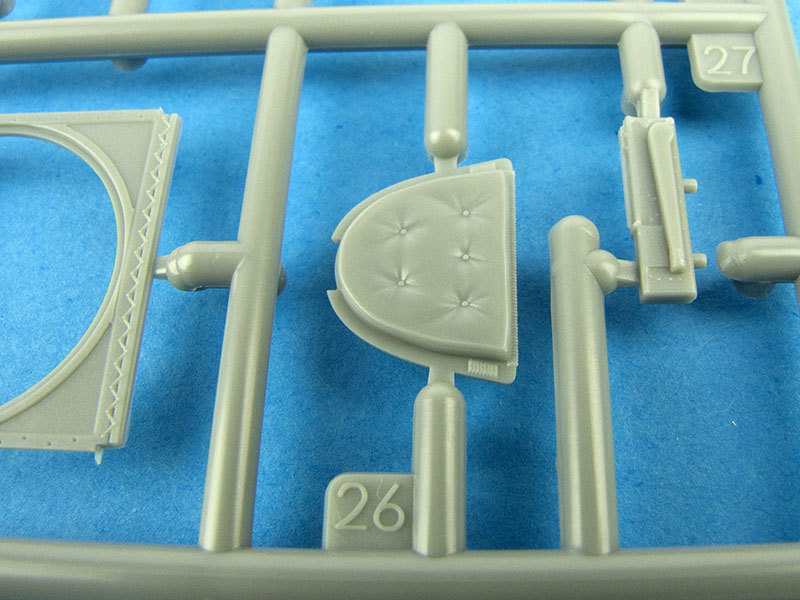
Note the subtle hint of spokes under canvas on the wheel, and the overall crispness of the moulded detail:
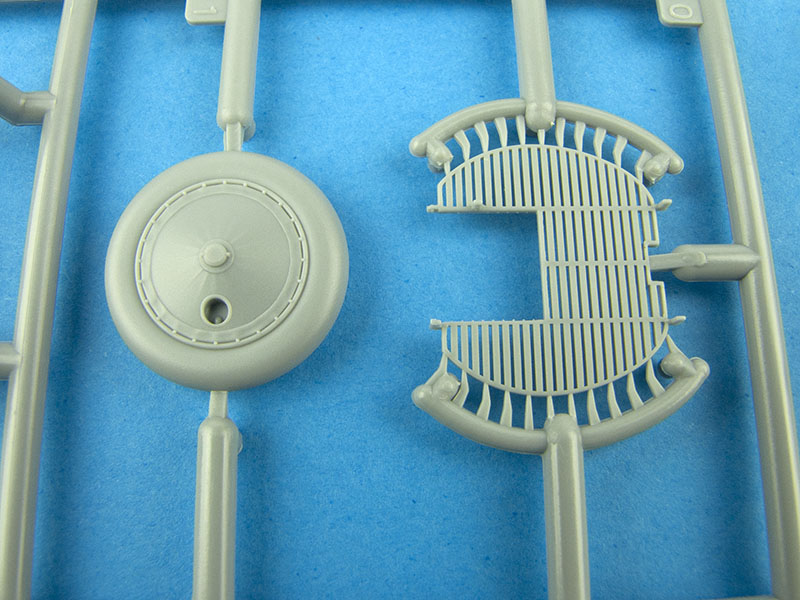
You can also see some delicate undulations moulded into the wing surfaces:
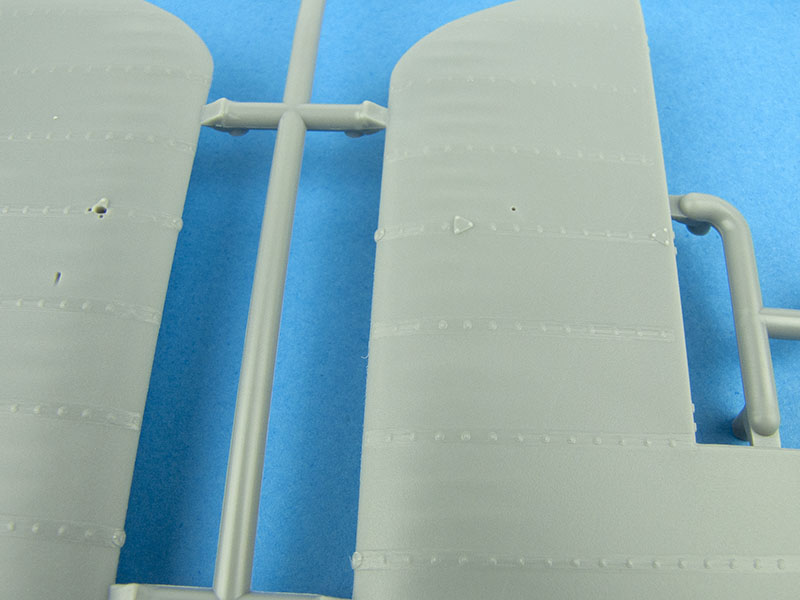
The stitching on the fuselage, while arguably a little overscale, is also amazingly well done:
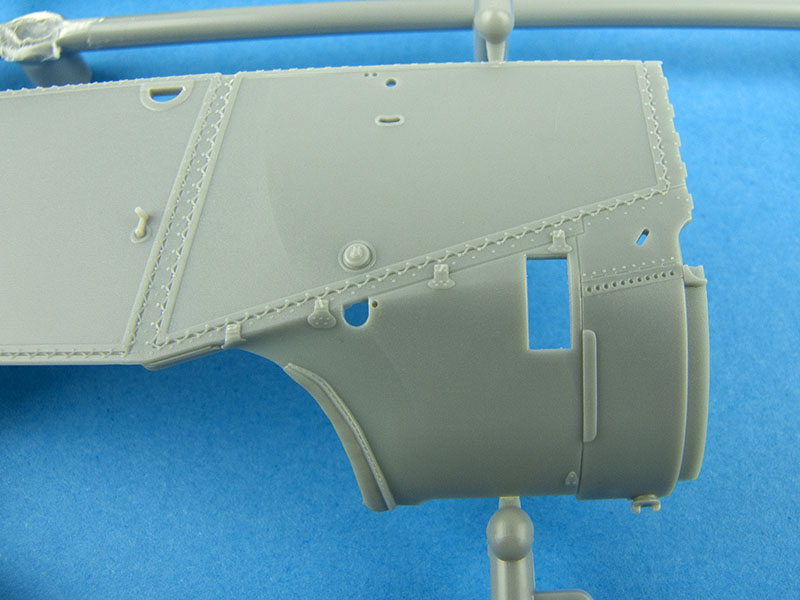
One thing that Wingnut Wings has in its favour, is that, due to the nature of the company's preferred subject matter, its kits are completely immune to the whole debate about the representation of rivets on scale models. Clearly, though, these aircraft present their own challenges, and Wingnut Wings handles them beautifully. Check out, for example, the highly usable wicker seat:
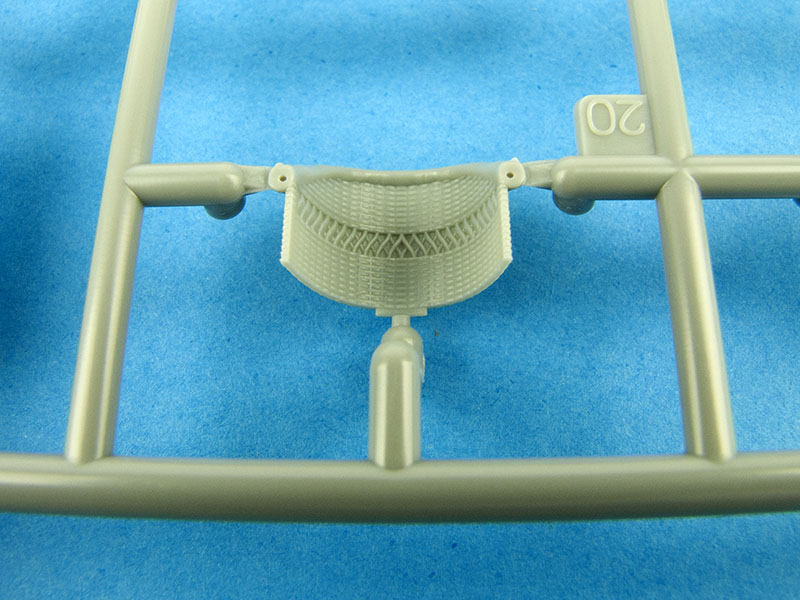
While arguably not as convincing as the best of the aftermarket options, it's still an impressive piece of injection moulding, and will certainly look the part once suitably painted.
The instrument panel also has some very nicely rendered detail:
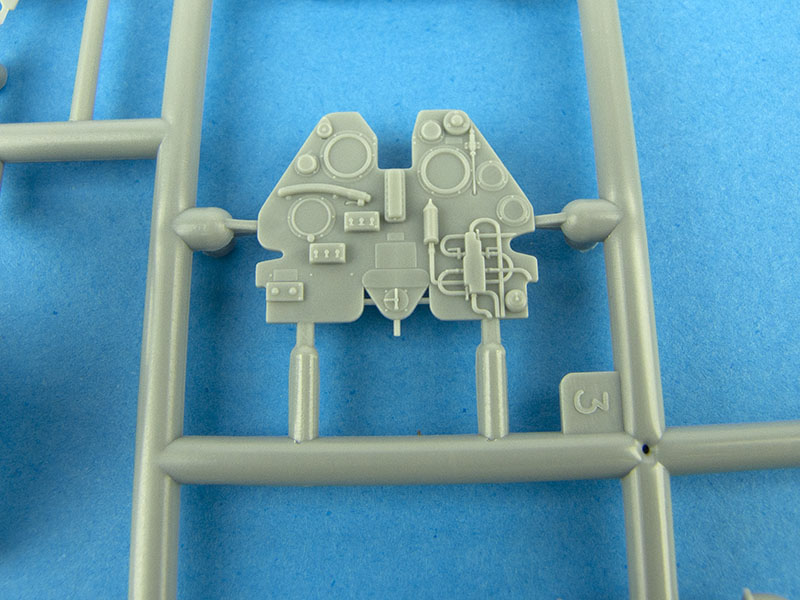
While examining these close-up photos, it suddenly occurred to me that there's one element to Wingnut Wings kits that typifies the company's attention to detail and thoughtful approach to kit design, but also something that I'm sure we all take for granted. I'm referring to the large, clearly-moulded part number tabs. This is a small, almost trivial detail, and yet I've battled kits from other manufacturers where these same tabs were so small, and their moulded-on numbers so faintly-moulded, that I could barely use them to identify parts. A small detail, certainly, but my fading eyesight appreciates it!
The Clear Parts
The clear parts are furnished on one small sprue:
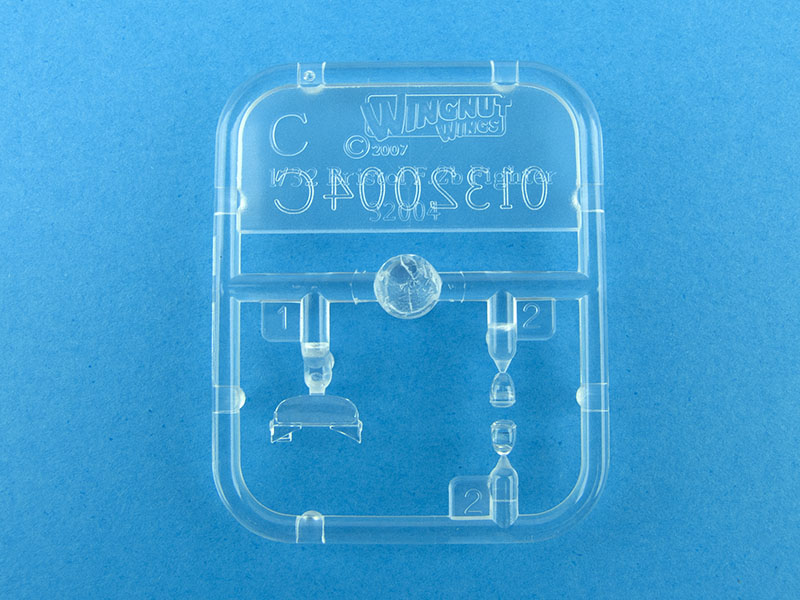
This sprue consists of nothing more than a small windscreen, and a pair of navigation lights.
Photo-etched Fret
Housed inside the plastic bag that contains the decals is a small photo-etched fret:
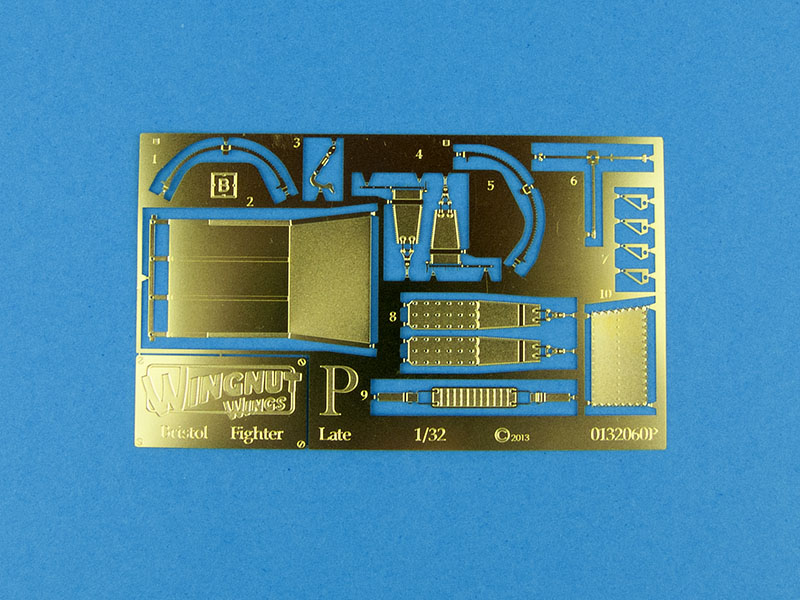
This consists mainly of seat belts and sundry cockpit details.
Decals and Markings
The decals are contained on a single large sheet:

These are exquisitely printed by Cartograf in Italy, and exhibit perfect registration, finely-printed details and no obvious signs of translucence.
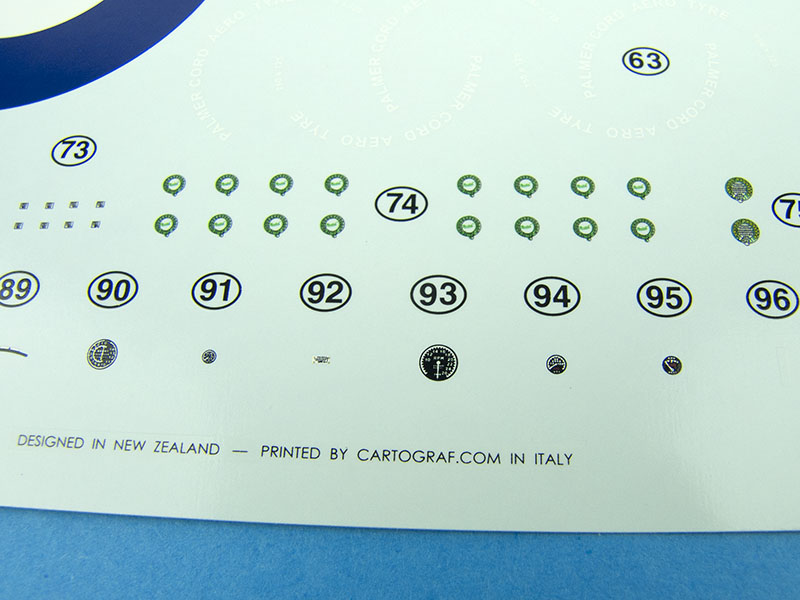
The sheet features markings for five aircraft:
- Bristol F.2b Fighter Mk.II F4392 ’B2’, Aboukir Egypt, 1926
- Bristol F.2b Fighter Mk.II F4435, 208 Sqn, Ismailia Egypt, 1925
- Bristol F.2b Fighter Mk.II J6647 ’K’, Gerard Combe, 31 Sqn, Dardoni India, 1923
- Bristol F.2b Fighter Mk.II ’19’, Irish Free State Air Corps, 1925
- Bristol F.2b Fighter Mk.III 7122, NZPAF, 1930s
Instruction Booklet
The instruction booklets supplied in Wingnut Wings kits have become legendary, and with good reason. The production values are equivalent to a glossy magazine, and to refer to them as mere instruction booklets does them a grave disservice.
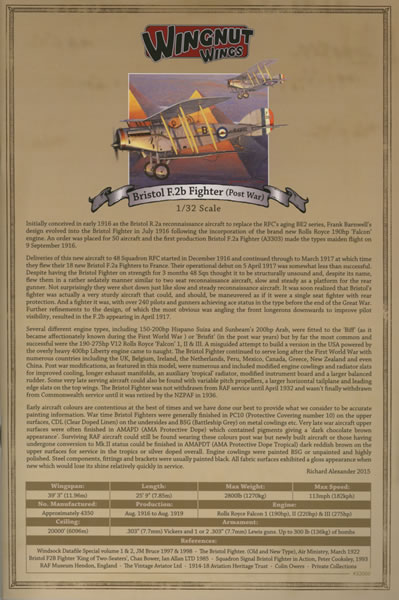
The cover features a potted history of the type, and a specifications table at the bottom. This material is also available on the Wingnut Wings webpage for the kit.
The content features colourful and highly-detailed annotated assembly drawings, complemented by captioned reference photographs and painting instructions.
Conclusion
This release may be based on one of the company's earliest kits, but still represents everything we've come to expect from a Wingnut Wings kit: exceptional moulding quality, excellent detail, superb decals and industry-leading documentation. What more could you ask for? Highly recommended.
Thanks to Wingnut Wings for the review sample.
© Kevin Futter 2015
This review was published on Friday, October 02 2015; Last modified on Saturday, October 03 2015


